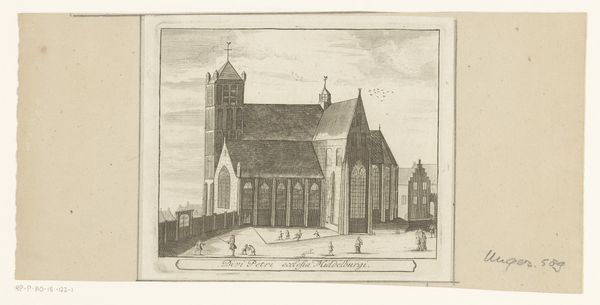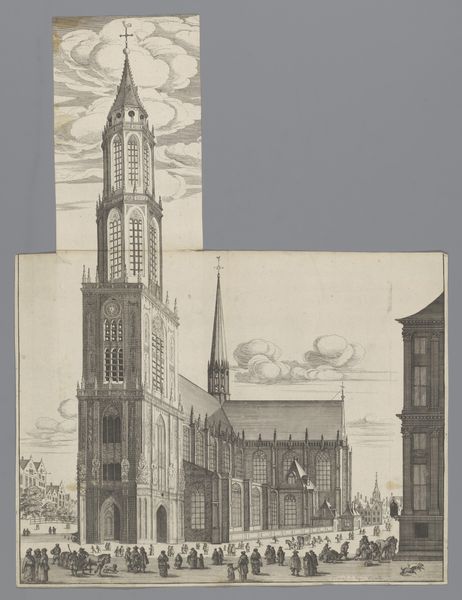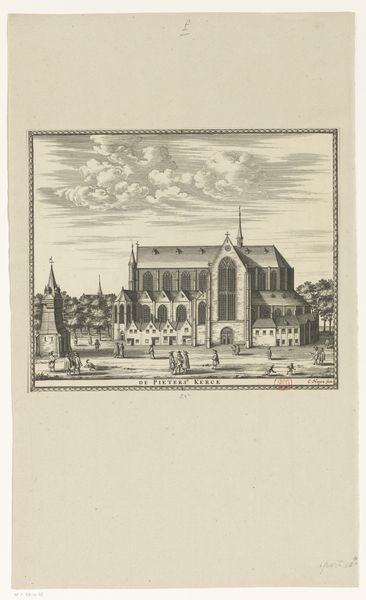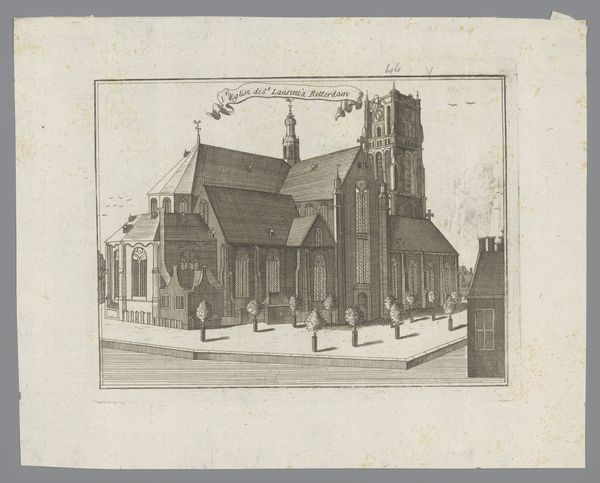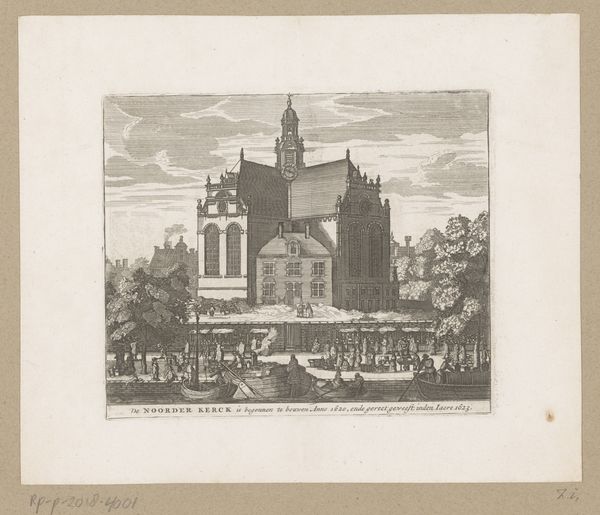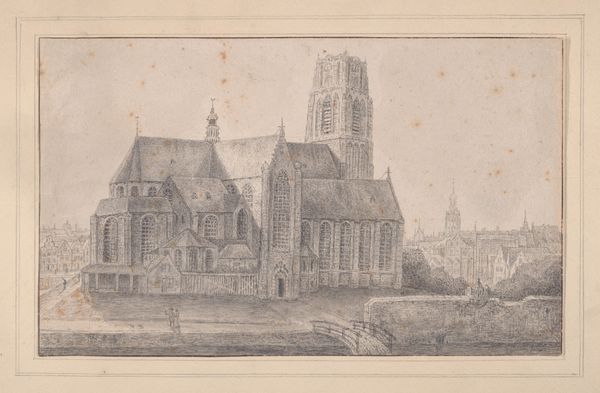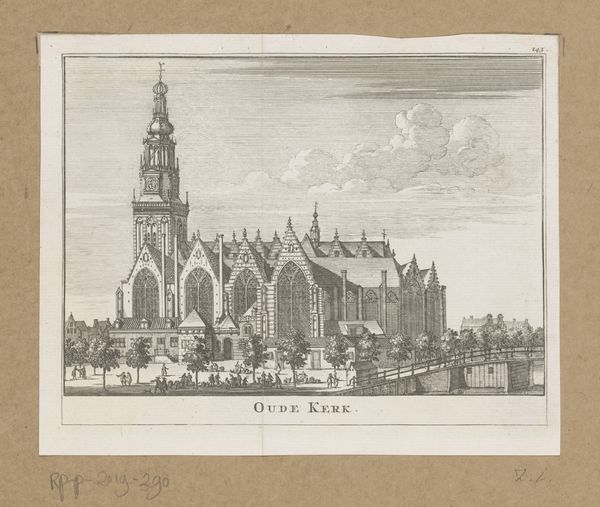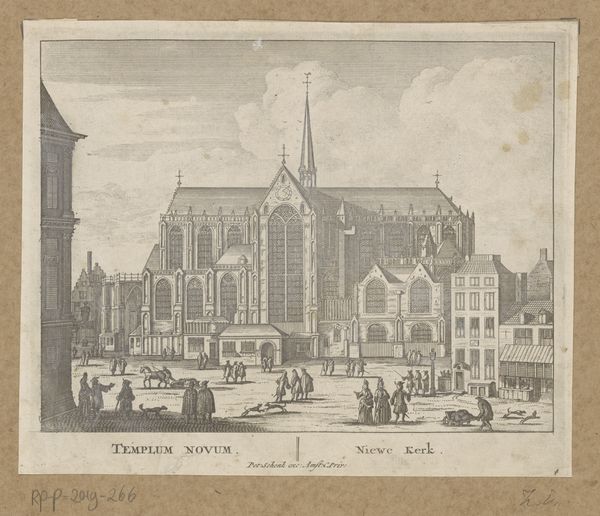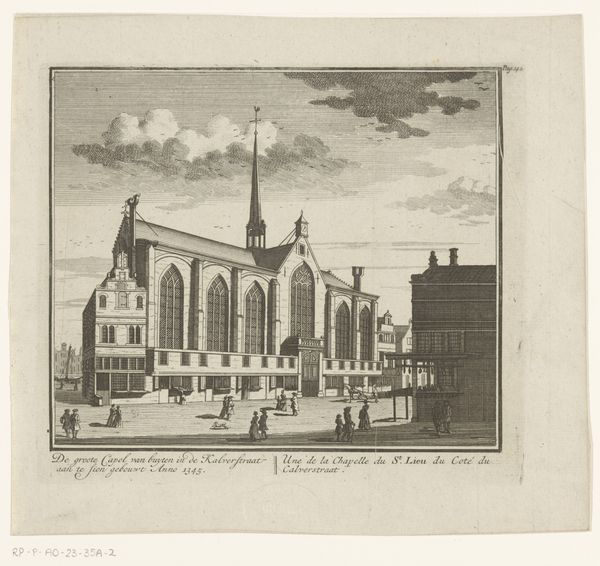
drawing, print, paper, ink, engraving, architecture
#
drawing
#
baroque
# print
#
landscape
#
paper
#
ink
#
cityscape
#
engraving
#
architecture
Dimensions: height 159 mm, width 199 mm
Copyright: Rijks Museum: Open Domain
Curator: This print, rendered in ink on paper, depicts the Dom Church in Utrecht. Pieter Devel likely created this between 1705 and 1715, during a period when the Dutch Republic was consolidating its power and engaging with the broader European stage. Editor: The crisp lines of the engraving give it a powerful sense of order, but I also feel a hint of melancholy. The tower looms so large, casting a kind of long shadow, even though it's just an image. It feels… monumental but also somewhat isolated. Curator: The dominance of the Dom Tower in cityscapes like these, becoming almost a symbolic guarantor of civic identity, highlights the Church's role in public life at the time. Consider how Devel chose this specific viewpoint. It emphasizes the sheer scale of the church and its integration within the surrounding architecture of Utrecht. This careful perspective shapes how the public would perceive it. Editor: The verticality is really striking. All those lines drawing your eye upward. It becomes a potent symbol, not just of religious authority but perhaps also of human aspiration – that striving towards something higher, something beyond the earthly realm. Look at those birds. They amplify the height and create a poignant contrast to the tower's static, man-made form. Curator: And let’s not overlook how prints like this circulated. They democratized access to architectural marvels. Previously, the experience would be limited to those who visited Utrecht. Now, anyone could contemplate the grandeur of the Dom Church. This also promoted Dutch artistic skill, solidifying the nation’s image abroad as an artistic center. Editor: So it functions on many levels: devotion, national identity, but also collective memory. Architectural imagery persists in memory because they mark turning points in time and provide a sense of place. This tower serves as more than a landmark; it tells a story of time. Curator: Absolutely, a powerful visual record. Understanding the historical context really opens up the viewing experience. I leave with a renewed understanding of how much meaning can be loaded into a single, seemingly simple image. Editor: For me, it underscores how places can inhabit our collective dreams and stir deep emotions across the centuries. The stark beauty leaves a lasting impact.
Comments
No comments
Be the first to comment and join the conversation on the ultimate creative platform.
